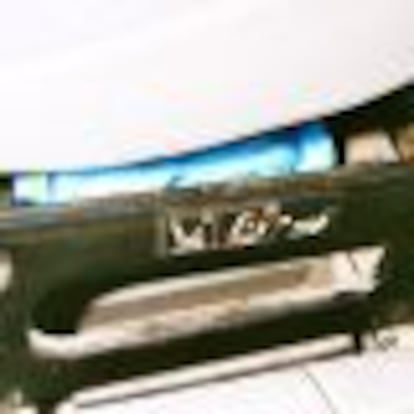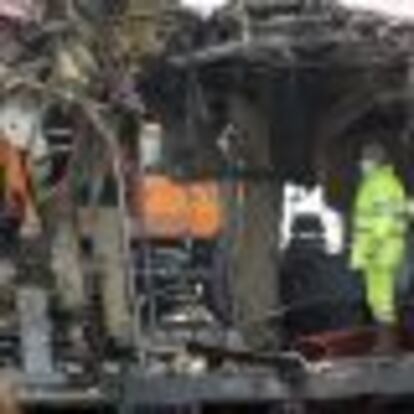Ten years of conspiracies and myths
The facts contained in the 100,000 pages of the case file debunk the conspiracy theories
William James, the father of modern psychology, famously said: "There's nothing so absurd that if you repeat it often enough, people will believe it." A decade on from the Madrid attacks of March 11, 2004, there are still people who insist that ETA was responsible, and that the police and the Socialist Party had conspired to overthrow the Popular Party (PP) government in the elections that took place three days later by blaming Islamist radicals.
In the months that followed, right-wing sections of the Spanish media, with the support of the PP, tried to discredit many of the officers and judges involved in the investigation because none of the evidence they found pointed to ETA’s involvement.
Below are some of the biggest myths invented by the conspiracy theorists:

“Everything points to ETA”
Within hours of the worst terrorist attack ever to take place in Spain, the PP government, led by Prime Minister José María Aznar, insisted that “everything points to ETA.” It maintained this position for two days, despite mounting evidence to the contrary. The judicial investigation found no proof of ETA involvement.

The miner’s testimony
José Emilio Trashorras, a former miner, sold the terrorists the explosives used in the attacks. He initially told police that ETA was involved, but later retracted his statement, admitting that he had done so to “create confusion”. He also said that Jamal Ahmidan, aka El Chino, the head of the group that carried out the bombings, had links to ETA.

The backpack that never was
Conspiracy theorists insist that the backpack containing explosives found in a police station among the personal possessions of victims was planted by the police to throw investigators off the trail of ETA.

Fake autopsies
The conspiracy theorists claim that the autopsies carried out on the men who blew themselves up a month after the attacks in a Madrid apartment when facing capture were falsified.

Goma 2 high explosive
The analysis into the explosives used in the March 11 attacks conclusively showed that it was of a type that had never been used by ETA.

The van: empty or loaded?
One of the many myths created by right-wing daily El Mundo was based on the supposed appearance of detonators in the van used by the terrorists.

Boric acid
Three police experts attempted to link ETA to the bombings: they cooked up a report a year after the attacks citing the presence of boric acid in the bombs, a material also used by ETA.

The washing machine timer
According to this theory, the timer found in the apartment where the Islamic radical suspects blew themselves up was of a type also used by ETA. In reality it was simply a washing machine programmer.

The Mondragón connection
On May 3, 2006, El Mundo published a story claiming that a Grupo Mondragón (a cooperative based in the Basque town) business card had been found in the van used by the terrorists. The idea was to create links between the attacks and the Basque Country.
Tu suscripción se está usando en otro dispositivo
¿Quieres añadir otro usuario a tu suscripción?
Si continúas leyendo en este dispositivo, no se podrá leer en el otro.
FlechaTu suscripción se está usando en otro dispositivo y solo puedes acceder a EL PAÍS desde un dispositivo a la vez.
Si quieres compartir tu cuenta, cambia tu suscripción a la modalidad Premium, así podrás añadir otro usuario. Cada uno accederá con su propia cuenta de email, lo que os permitirá personalizar vuestra experiencia en EL PAÍS.
¿Tienes una suscripción de empresa? Accede aquí para contratar más cuentas.
En el caso de no saber quién está usando tu cuenta, te recomendamos cambiar tu contraseña aquí.
Si decides continuar compartiendo tu cuenta, este mensaje se mostrará en tu dispositivo y en el de la otra persona que está usando tu cuenta de forma indefinida, afectando a tu experiencia de lectura. Puedes consultar aquí los términos y condiciones de la suscripción digital.
Últimas noticias
From digital curfews to blocking apps: How technology experts protect their children online
Why the price of coffee has skyrocketed: from Brazilian plantations to specialty coffee houses
Confined to a Cuban hospital: When electricity is a matter of life or death
The complicated life of Francesca Albanese: A rising figure in Italy but barred from every bank by Trump’s sanctions
Most viewed
- Why we lost the habit of sleeping in two segments and how that changed our sense of time
- Trump’s obsession with putting his name on everything is unprecedented in the United States
- Pablo Escobar’s hippos: A serious environmental problem, 40 years on
- The Florida Keys tourist paradise is besieged by immigration agents: ‘We’ve never seen anything like this’
- Charles Dubouloz, mountaineering star, retires at 36 with a farewell tour inspired by Walter Bonatti









































